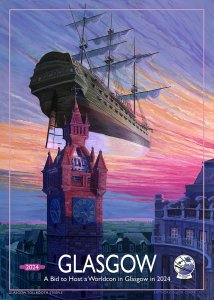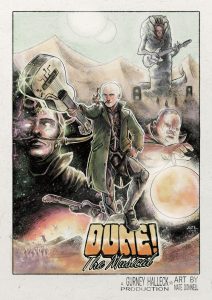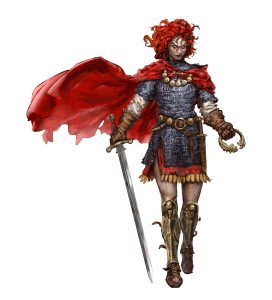
Neil Gaiman’s The Ocean at the End of the Lane (published by William Morrow Books) lands in bookstores today, and it might as well be a national holiday. Fans have waited with bated breath for Gaiman’s first novel for adults since Anansi Boys, but the story had been percolating long ever since Gaiman was a young boy. At Book Expo America, we had the pleasure of hearing Gaiman discuss the winding road that led him to The Ocean at the End of the Lane and the dangerous power of fiction.
When Gaiman was but a wee babe, his family played host to a lodger who suffered a series of misfortunes. The man’s tragedies eventually led him to suicide; he drove the Gaiman family car down to the end of the lane and took his own life. Gaiman’s father disposed of the car, and it wasn’t until years later that Gaiman learned why their car had disappeared. The story stuck with him, niggling at the back of his mind as he penned novels like American Gods, which contains some of the blueprints for The Ocean at the End of the Lane.
The book’s official summary read as follows:
It began for our narrator forty years ago when the family lodger stole their car and committed suicide in it, stirring up ancient powers best left undisturbed. Dark creatures from beyond the world are on the loose, and it will take everything our narrator has just to stay alive: there is primal horror here, and menace unleashed – within his family and from the forces that have gathered to destroy it. His only defense is three women, on a farm at the end of the lane. The youngest of them claims that her duckpond is an ocean. The oldest can remember the Big Bang.
Gaiman also spoke a bit about his newest children’s book Fortunately, the Milk. He said he wanted to write a book celebrating fathers after learning that an earlier work (inspired by his own son), The Day I Traded My Dad for Two Goldfish, was often gifted to fathers. He worked with illustrator Skottie Young on Fortunately, the Milk, and together, they created a book that anyone with a dad who spins tall tales can relate to.
Gaiman used discussion of his own work as a jumping off point to get to the meat of his talk: why fiction is dangerous. In his own words:
Fiction is dangerous because it lets you into others people’s heads. Fiction is dangerous because it gives you empathy. Fiction is dangerous because it lets you know that the world doesn’t have to be the way it is.
At a recent science fiction and fantasy conference in China, Gaiman talked a bit with organisers about why a country with such strict censorship laws was now opening its doors to genre literature. Technological creativity, they said, was fueled by fictional exploration. When talking with engineers and designers from places like Google and Apple, most professed to find inspiration in the potential futures envisioned by science fiction. And therein lies the peculiar power of fiction: it changes the way people see the world. It shows us that the world we live in doesn’t have to be the one we make. Fiction is dangerous because it’s an incredibly potent force in human innovation. And because of that, fiction, Gaiman argued, isn’t merely a danger. It’s an absolute necessity.
Share your comments below or on Twitter @STARBURST_MAG
Find your local Starburst Magazine stockist HERE, or buy direct from us HERE. Our issues are also available as fully interactive iPad editions, loaded with multimedia, and can be downloaded via Apple HERE.
Click To Buy








No comment yet, add your voice below!